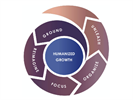Arun Sudhaman 02 Dec 2015 // 9:30AM GMT
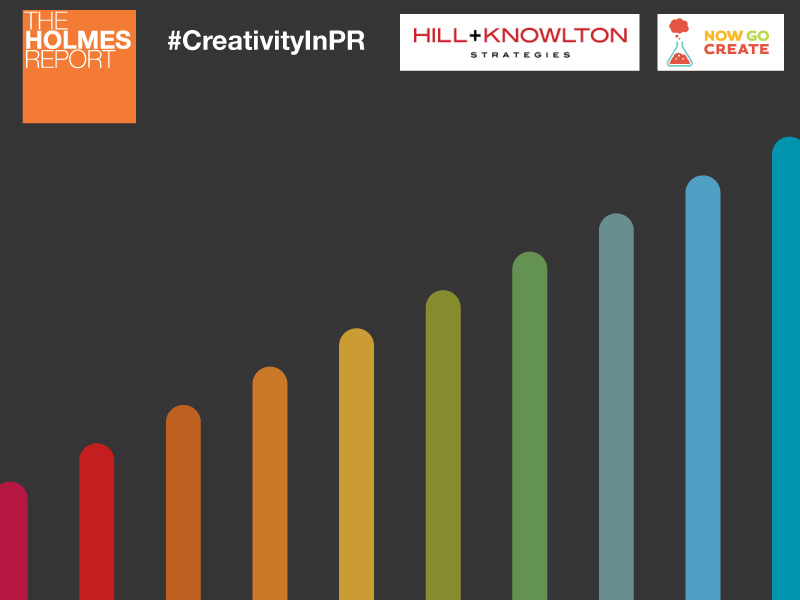
Budget remains biggest barrier according to the 2015 Creativity In PR study, which also explores how creative talent is being recruited and rewarded, and indicates the proportion of women that are tasked with creative leadership.
The 2015 Report, co-authored by Now Go Create and conducted in conjunction with H+K Strategies, polled 500 agency and in-house respondents across 35 countries, and asked clients to list the most important areas in which PR firms need to improve their creative quality. A free PDF of the study is available below.
As in previous years, there are concerns about investment in creativity. This year, lack of budget emerges as the top barrier to creativity, ahead of client feedback or risk aversion. Several new options on the list also found backers: lack of bravery and lack of process or skills.
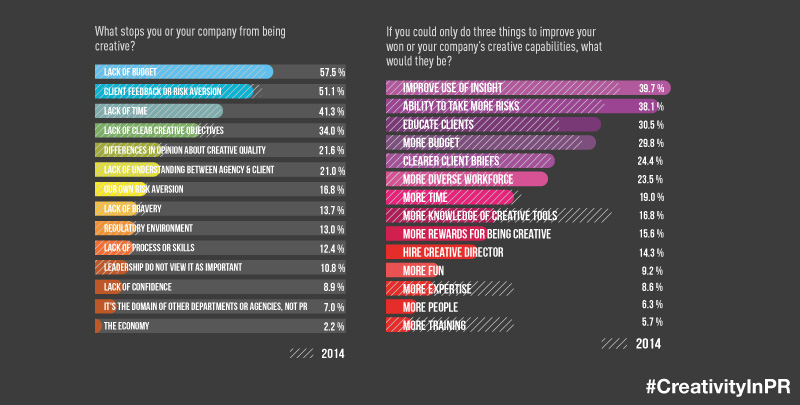
"It’s those niggling problems of second-guessing the clients and, perhaps, their play-it-safe attitudes – as well as omnipresent budgetary constraints – that most rankle," says Now Go Create founder and Report co-author Claire Bridges. "Clients might be less risk-averse if the ideas were tested more. The PR industry could learn a lot from the world of design thinking and lean start-ups – prototyping, iterating and developing ideas rather than budget all-in or nothing."
Meanwhile, when asked for three things that would help them become more creative, respondents again pointed to ‘improved use of insight’, which rises from 33% to 40% this year. . Almost as important is the ‘ability to take more risks’ (38%). ‘More budget’ and ‘educate clients’ take equal third place, while clearer client briefs are also important.
“Clients need to give PR agencies a fair seat at the table,” said one survey respondent. “They claim to be idea agnostic – that they will take the best ideas wherever they come from. In reality, they assign the ad agencies as lead and the great ideas from PR rarely see the light of day.”
Talent — recruitment, rewards & gender
39% of respondents say their business has a creative director (CD), down slightly from last year. An equal proportion see the role as unnecessary.
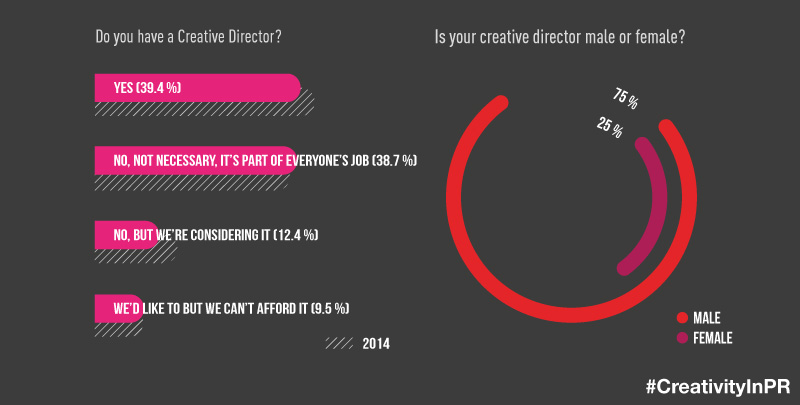
“I notice a shift in thinking about the role of the CD and whether one person can truly be held responsible for the creative output of a business,” says Bridges. “It’s more a question of creative leadership, which comes from the whole leadership team or board in terms of whether creativity is genuinely important. This leads to a culture where creativity is fostered and nurtured and a CD is part of that but not the sole answer.
“Too often in PR agencies the CDs I speak to are lumbered with managing every new business pitch, every difficult client issue and day-to-day client responsibilities with the role as creative leader frequently sidelined. But when the CD is given the room to breathe they need it can be transformational to a business.”
25% of creative directors in PR are female according to the study. This is considerably higher than the proportion recorded in the advertising industry, but must still be a cause for concern.
Recruitment remains conducted primarily via a proven track record and portfolio of work. A recommendation goes a long way too. For H+K global creative chair Richard Millar recruitment must focus on “seeking out and selecting only those who show the highest levels of curiosity in the world around them.”
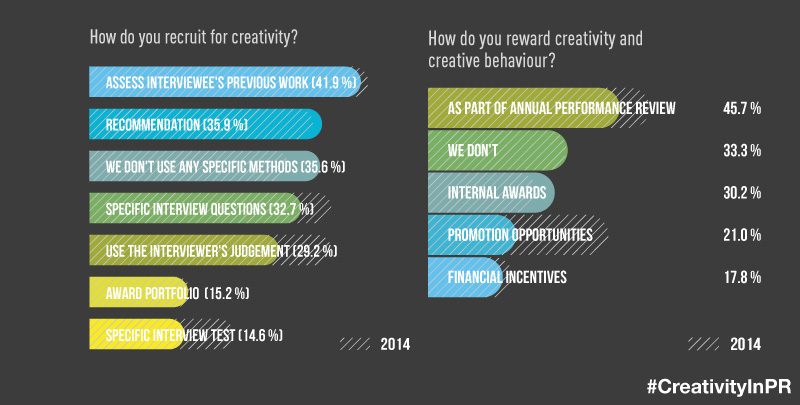
The results this year show a workforce being rewarded less and less for their creativity. Across the board the numbers are down: ‘internal awards’ has fallen to 30% from 43%; ‘annual performance review’ has dropped to 46% from 53%; even ‘promotion opportunities’ is down, too (21% compared to 33% last year).
“The only response on the rise this year was ‘we don’t reward for behaviour’, which jumped from 26% to 33.3%,” explains Bridges. “This, and the other answers, perhaps point to the rising expectation levels in the industry when it comes to creativity. Like arriving for work on time and not insulting the boss, creativity is being woven into the very fabric of what we do and rewards for it are falling.
“People who enjoy being creative do it in large part for intrinsic motivation – because they like it for its own sake - which is lucky for their employers who don’t seem to want to reward it,” continues Bridges. “However this result and the recruitment results demonstrate to me a major disconnect between HR practices and creativity. Who wants to leave something so fundamental down to luck?”
Creativity In PR 2015 — Other key findings that are explored this week:


































.jpg)













